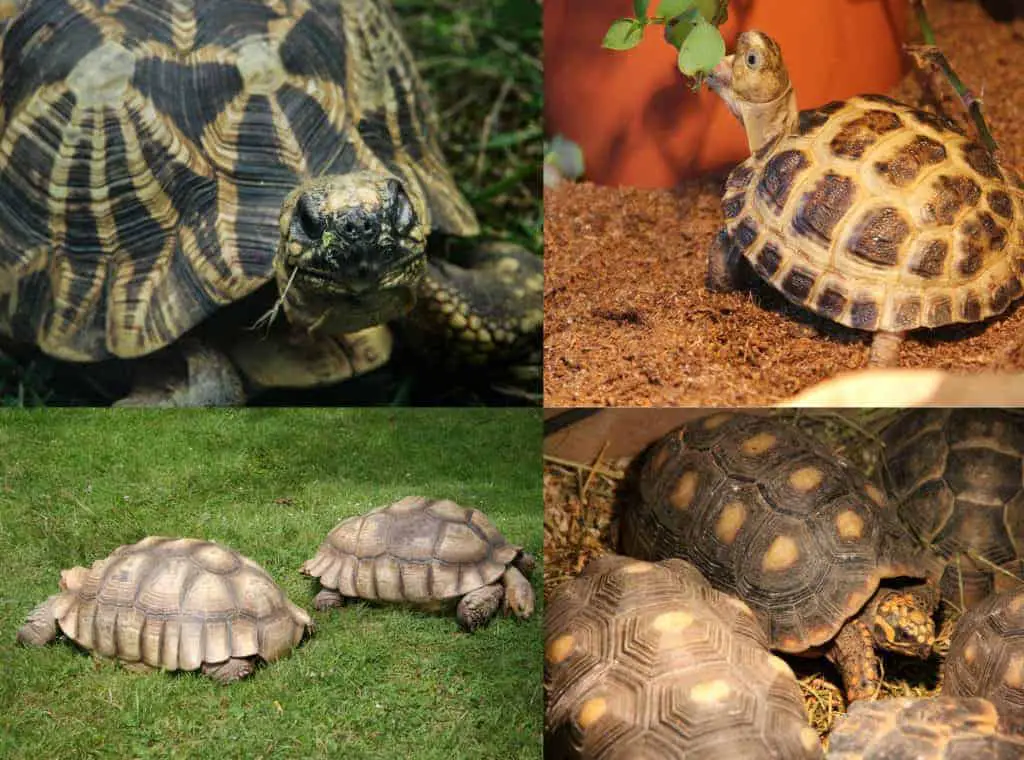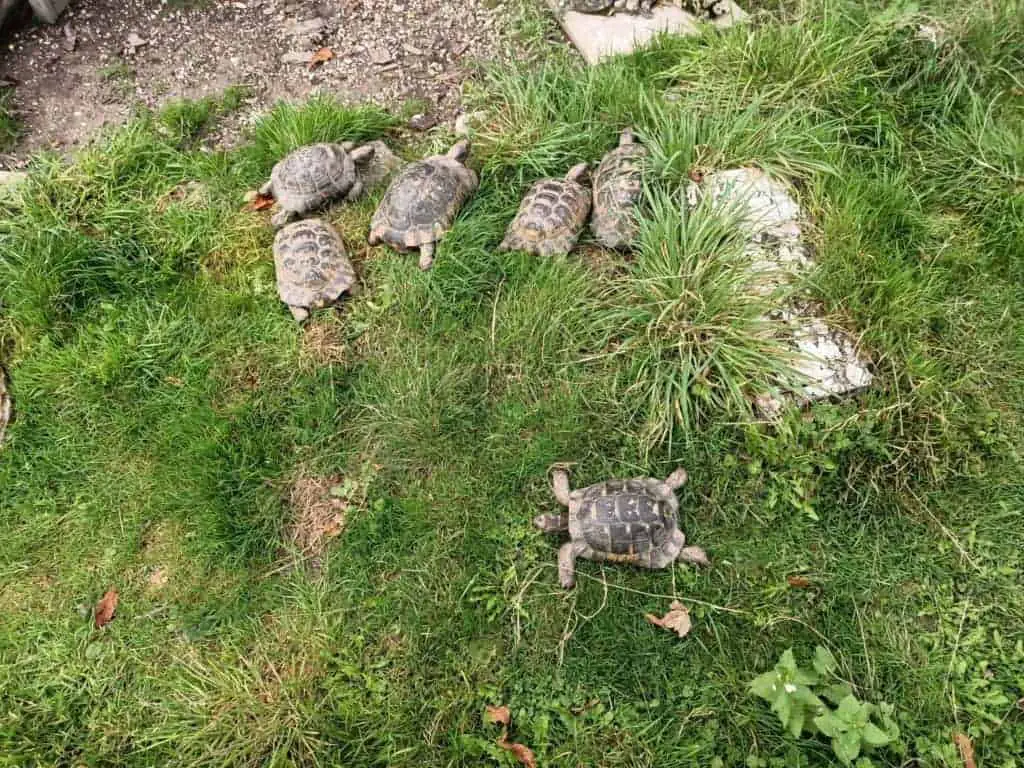
Keeping pet tortoises can quickly become addictive for some people, and so long you’re prepared to look after them correctly, there’s absolutely nothing wrong with owning more than one of these intriguing creatures.
A question that comes up when an owner starts to consider buying a second tortoise is ‘can the two tortoises be kept together in the same enclosure?’ and if so, ‘does it matter if they are different species?’

Whilst more than one tortoise of the same species can be kept together (although there are a few caveats to this, which I’ll cover below), the same cannot be said for keeping different species together.
You should not mix tortoise species in captivity for several reasons: there is the risk of one specimen attacking another, particularly if there is considerable difference in size; and infections that are silently carried by one species may negatively affect another. Although this may not always be evident immediately, it can occur months or even years down the line.
Keeping More than One Tortoise of The Same Species

As mentioned above, keeping more than one tortoise of precisely the same species does not, in theory, carry any risk of cross contamination of infection, provided of course that neither is harboring an infection that does affect the species in question.
For instance if you have a tortoise that has a history of respiratory infection there is a chance they may pass this onto a new arrival. To overcome this, ensure both are in peak health prior to introducing them. Usually this involves quarantining the new arrival for a month or two to allow any infections or foreign parasites to be detected, and if necessary, treated.
Interestingly zoos and other professional tortoise owners/breeders will usually quarantine new tortoises for between 6 months and a year, although of course the stakes are much higher in these circumstances.
Assuming health isn’t an issue, the other consideration for keeping multiple tortoises of the same species is their sex. Males tend to be far more aggressive than females, so in general they are best kept in solitude unless you plan on trying your hand at breeding.
Females on the other hand can be kept in groups without issue, providing they each have a reasonable amount of space to themselves, without the risk of getting in each other’s way.
Why is this important? Well the truth is that tortoises are solitary animals, and even in the wild they don’t really spend a lot of time interacting with others, although of course coming across other tortoises is a natural part of life, so there is certainly no harm in keeping a group of females of the same species together, so long as the conditions and room are as close to those found in the wild as possible.
How to Safely Keep Different Species of Tortoise
We know that keeping different species of tortoise in the same enclosure is a big no no as far as possible confrontation between specimens is concerned, so keeping them in separate enclosures is an absolute must.
However, we also know that cross contamination of disease or infection is another major issue when keeping multiple species, so as an owner you’ll need to do everything in your power to make sure you don’t inadvertently spread contaminates between enclosures
Preventing Cross Contamination
Common sense is the most important tool in the armoury of an owner of different species of tortoise, so the aim of the game is to simply to eliminate any method of transmission of infection or parasites as you move between one enclosure and another.
In theory you are the only possibly method of cross contamination, although a poorly ventilated area that contains your various enclosures could see airborne pathogens spreading from one enclosure to the next, as indeed could the presence of rats, mice or other vermin.
To prevent yourself from transmitting infectious agents ensure you wash your hands between each species encounter, and if possibly decontaminate your footwear (if applicable) as well. If you’re really serious about this, it’s a good idea to have a separate pair of shoes or boots for accessing each enclosure, as well as separate tools, cleaning equipment, and any other items that might otherwise have been shared or used across all your enclosures.
As for discouraging vermin, a proper cleaning schedule will eliminate much of what attracts unwanted guests, such as scraps of food or substrate left lying around, and you should also check for any signs of invasion and make any repairs to enclosures as necessary, and if you need to put down traps, poisons, or other deterrents, obviously just be sure to keep these outside of, and away from your tortoise enclosures.
What to Look Out For if Cross Contamination Does Occur
Signs of Respiratory Infection
Respiratory infections are among the most common afflictions to affect tortoises, and whilst cross contamination from other tortoises isn’t the only way they are spread, this is none the less a common route of transmission.
The most obvious sign of such an infection is discharge from the nose or mouth, but you might also notice your tortoise behaving strangely, such as spending more time in a single area of their enclosure than they might normally do.
Depending on the health of the tortoise and the specific pathogen involved, your tortoise may be able to fight off a respiratory infection without veterinary intervention, however regardless of this, it is always wise to consult a vet for the simple fact that such infections can prove fatal if left untreated.
Signs of Parasitic Infection
A tortoise that has been raised in unsanitary conditions may consequently be exposed to parasites that can cause infections within the digestive tract. Such an infection can then easily be spread to healthy individuals already within your care.
Symptoms of such an infection are as you might expect; vomiting, diarrhea, and loss of appetite. Veterinary intervention is absolutely essential, and you may find several treatments are required to fully cure the problem.
Tortoises can also be affected by external parasites such as ticks, along with all the infections they carry. Again, this reiterates the need for quarantining and the thorough visual inspection before you take on a new tortoise.



